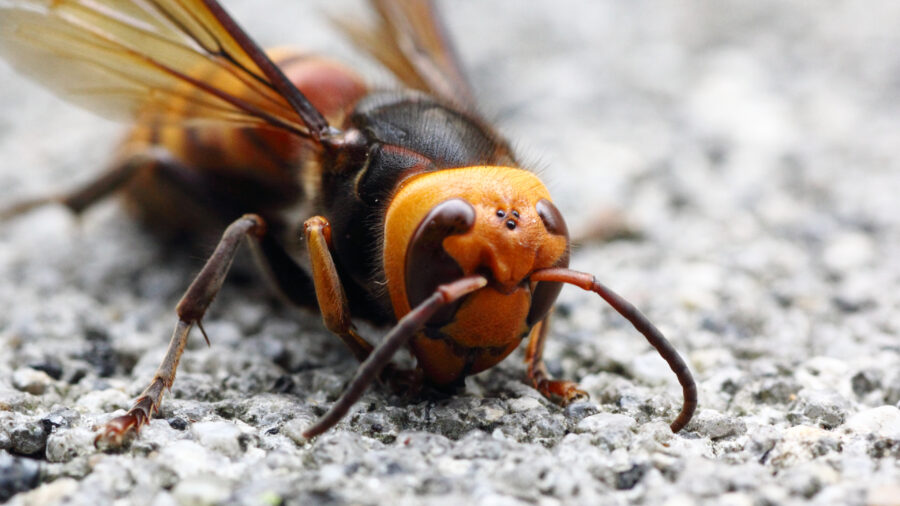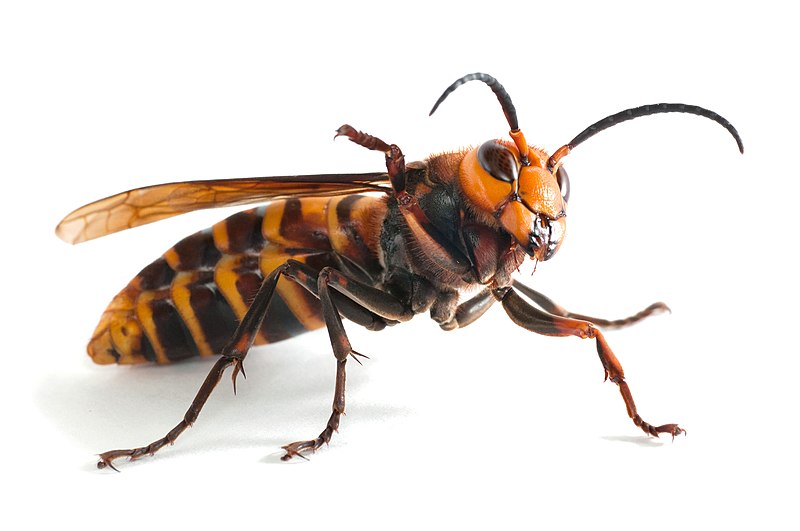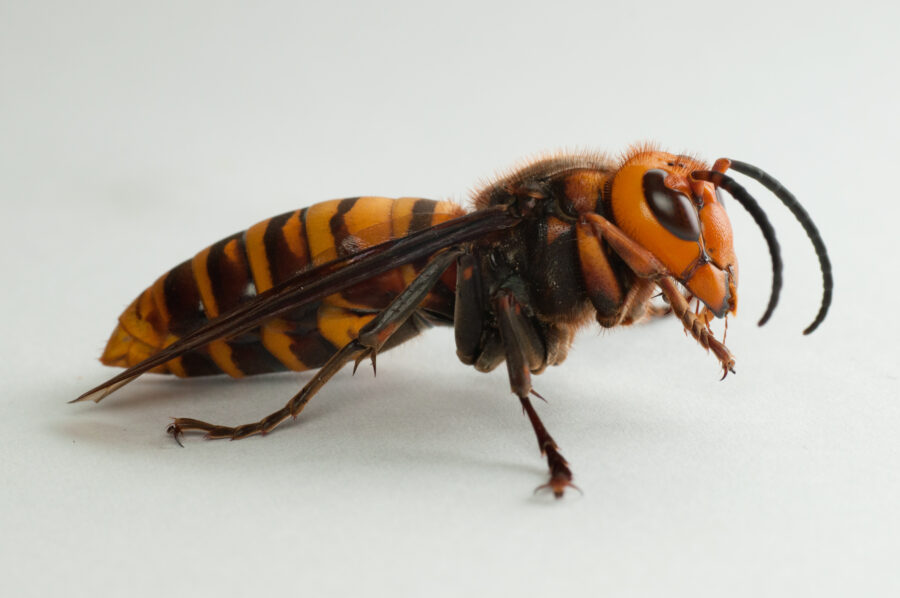Giant Murder Hornets Are Entering The Slaughter Phase
The giant murder hornets are back and entering the not-at-all menacing sounding "slaughter phase."
This article is more than 2 years old

They are back if they had ever gone away. Yes, the Asian giant hornet, also known as the “giant murder hornets” or Vespa mandarinia, has returned larger than life. Last week, Agricultural officials in Washington State said they are trying to locate and destroy what they believe is a nest of these hornets after evidence of six giant hornets was found near the town of Blaine in Whatcom County.
The six giant murder hornets that were found doubled the amount that was discovered earlier in the state, causing major concern for the agricultural officials. The good news, if you can call it that, is that one of the hornets was captured alive, a first for the Department of Agriculture (WDA) in Washington.
The fact that the number captured doubled caused department entomologist Sven-Erik Spichiger, as well as others, pause. “We believe we are dealing with a nest,″ said he said via the AP News. “We hope to locate the nest in a couple of weeks and eradicate it.” Good idea. Not only were the hornets captured but they were also able to photograph one of the hornets attacking a wasp nest.

The WDA posted on their Facebook site pictures of two of the hornets next to a yellow jacket, showing just how large these giant murder hornets can grow.
The damage they can cause could be enormous. If they are allowed to build and remain, the giant murder hornets, which can reach sizes up to 2 inches, can cause a sting that is extremely painful to humans and can also decimate entire hives of honeybees. The giant hornet calls China, Japan, Thailand, and South Korea its home, so its presence in the United States is shocking.
Officials still have no idea how this large (the largest) species of hornet found its way into the United States. The “giant murder hornet” didn’t just get its name for taking out entire hives, but also got it from reports in Asia, where the hornets have stung people so often that they have died.
While the threat to human life is there, though not enough to cause major concern, the main issue comes from these giant murder hornets and the catastrophic damage they do on honeybee hives. It’s also the time of year when they attack that can cause lasting effects. The time of year when they attack is near and it is something that Spichiger calls the “slaughter phase.”
This happens in late summer and early fall and when at their most destructive, the murder hornet will find the honeybee hives and decapitate the bees. It takes only a few hours for the murder hornets to completely destroy a hive and obviously the honeybees are in no position to protect themselves.

Whatcom County has been where all the sightings have happened. The Asian giant hornet was first sighted in 2019 and to date, the number has reached over a dozen. Ag officials have been trying desperately to capture, tag, then follow the hornets back to their nest but their recent capture failed.
Officials tried to glue a radio tag to the hornet so they could track it, but the glue didn’t dry fast enough and fell off. Ultimately, the giant murder hornet was also unable to fly. The hope is that officials are able to capture another hornet to tag and track.












